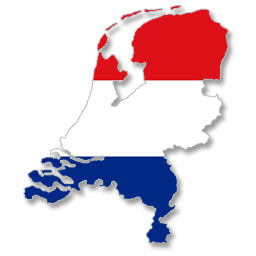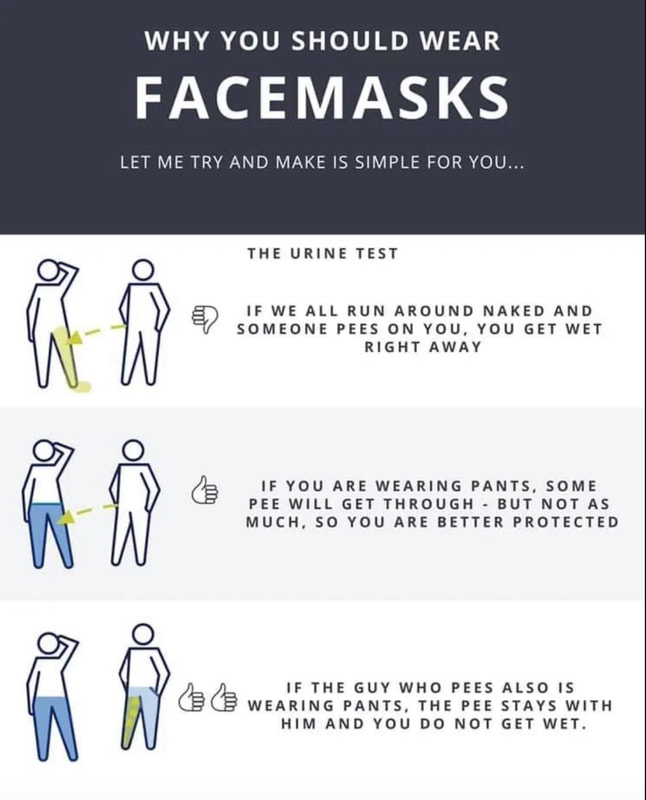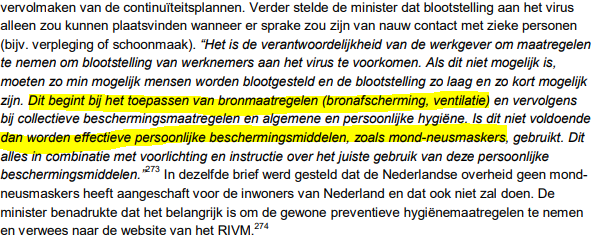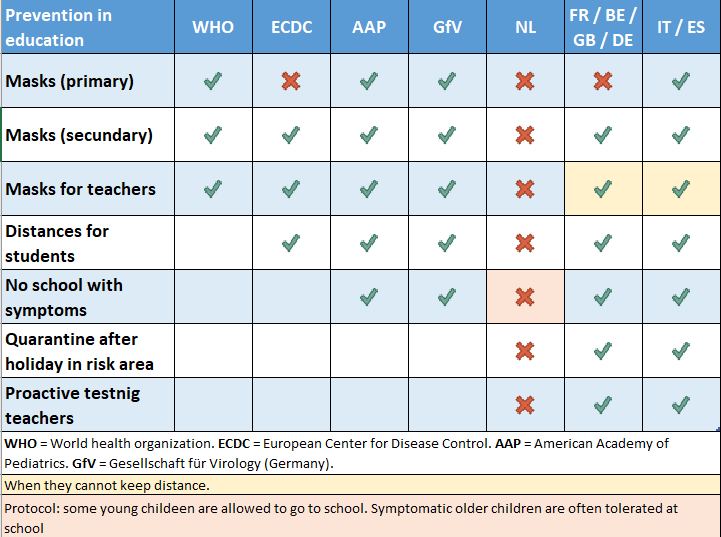COVID-19Avoid contiminationJohn Jacobs
|
Lockdown
When a country fails to fight an epidemic technically, e.g. by limited preparation or unexpected server epidemic, a lockdown would be an option. A lockdown has major consequences: social, economic, healthcare and for people (Engbersen). End of January, Wuhan went in lockdown for COVID-19. After 5 weeks, the regime was loosened and after 2.5 months the epidemic was controlled and the city could breathe freely again. A (partial) lockdown is an emergency measure against a virus epidemic, but not a sustainable option. People do not like a lockdown or other limitations. Thus a lockdown should be as limited as possible. A TTI strategy is highly recommended.
Distance and carrier
Respiratory viruses spread through a carrier, like water or solid particles solved in air. Some discussion has focussed if these water particles are small droplets or aerosol (mini-droplets). Small droplets precipitate within 1 to 2 meters on the floor or on materials like cloths, furniture and cutlery. This was the initial reason for the WHO to call for 1 to 2 meters distance. The concentration for droplets is diluted by surface, e.g. a fourfold reduction for a doubled distance.
Aerosol is less affected by gravity, but distance is even more important, not by surface but in cubic dimensions: doubling the distance means an eight fold lower concentration. Particulate matter (PM) of similar sizes, behaves likewise. Some reports show spreading of SARS-2 by aerosol and PM, but not by primarily by small droplets (Jimenez). Mini-droplets and PM could enter the respiratory tract much deeper.
Aerosol is less affected by gravity, but distance is even more important, not by surface but in cubic dimensions: doubling the distance means an eight fold lower concentration. Particulate matter (PM) of similar sizes, behaves likewise. Some reports show spreading of SARS-2 by aerosol and PM, but not by primarily by small droplets (Jimenez). Mini-droplets and PM could enter the respiratory tract much deeper.
Instable viruses
Coronaviruses are instable – e.g. only for minutes at room temperature. Just like all other viruses, they cannot reproduce outside of the host, which is a major difference with bacteria. The amount of virus decreases in time, even more rapidly at higher temperatures, radiation friction from turbulence and / or soap. A longer distance generally also means a longer time to travel.
Outside
It is sometimes claimed that ventilation and outside air are a panacea against virus infections. Major superspreading events in Europe, such as European football, winter sports and carnival, already raised some questions. However, a motorsport rally in the US takes the cake with potentially 250,000 infections linked to a single outdoor event (Dave). This invalidates all who claim that being outside is safe. Keep your distance is always important, inside and out, because the virus mainly spreads from person to person.
Mouth masks
The Netherlands are reluctant with mouth caps. Laboratory experiments showed insufficient protection from non-medical
mouth caps. In the lab, pressured air is blown through a filter and the pores are too large for complete protection. The lab setup resembles better the mechanism of an air conditioner than normal breathing. During normal breathing, only small pressure differences arise and the turbulence significantly slows the airflow and reduces the number of virus particles passing through the mouth cap (Figure 1). Slowing down of air flow and turbulence allows virus neutralization over time and through friction. When sneezing, a mega turbulence occurs with a mouth mask, instead of launching virus aerosol over 9 meters. That is why the Netherlands recommended the use of nose masks for infections like influenza (Figure 2).
Most European countries have sufficient medical mouth caps for the whole population. In Belgium they are distributed cheaply via supermarkets. The Netherlands does not have enough medical mouth cap to provide even all healthcare workers. If not professionally applied, as could be expected from laymen, medical mouth masks do not offer more protection than non-medical face masks.
The non-medical mouth masks do not suffice for full personal protection, but significantly reduce the risk for the wearer and its environment.
mouth caps. In the lab, pressured air is blown through a filter and the pores are too large for complete protection. The lab setup resembles better the mechanism of an air conditioner than normal breathing. During normal breathing, only small pressure differences arise and the turbulence significantly slows the airflow and reduces the number of virus particles passing through the mouth cap (Figure 1). Slowing down of air flow and turbulence allows virus neutralization over time and through friction. When sneezing, a mega turbulence occurs with a mouth mask, instead of launching virus aerosol over 9 meters. That is why the Netherlands recommended the use of nose masks for infections like influenza (Figure 2).
Most European countries have sufficient medical mouth caps for the whole population. In Belgium they are distributed cheaply via supermarkets. The Netherlands does not have enough medical mouth cap to provide even all healthcare workers. If not professionally applied, as could be expected from laymen, medical mouth masks do not offer more protection than non-medical face masks.
The non-medical mouth masks do not suffice for full personal protection, but significantly reduce the risk for the wearer and its environment.
Figure 1. The action of mouth mask in minimizing aerosol spread is illustrated by a pair of jeans limiting the spread of urination.
Figure 2. Advice to the Dutch House of representatitves on mouth masks for the Mexican flue. "When the source control is insufficient, efficient personal protection measures, like mouth mask, should be used. (SiccoVanHoegee).
Protecting children
In general, children are less vulnerable to develop COVID-19, even though they get infected by SARS-2. Children can spread the virus for weeks without having symptoms (DeBiasi; Han). Understandably, secondary school staff is very concerned about the risk of contamination (AOB). Looking only at students, their health risks seems to be limited, and going to school might be more important. The US, UK and most EU countries take precautions for children attending school (Figure 3). The Netherlands has a remarkable different policy that deviates from the WHO guidelines, without objective scientific evidence.
Figure 3. Differences in protecting children at school (ContainmentNu)
Self protection
In the first wave of COVID-19, the community learned who was at risk for fatal COVID-19. These include the elderly and in the second wave, these seem to be isolating themselves as apparent by being infected less frequently (Figure 4). Vulnerable people might opt for a personal lockdown since the epidemic is not contained by testing, tracing and isolating (TTI). This might be a painful illustration of failing disease-prevention policies.
Figure 4. Self-isolation of vulnerable people in the second wave. Data from AD.
John Jacobs
12 - 09 -2020
12 - 09 -2020






